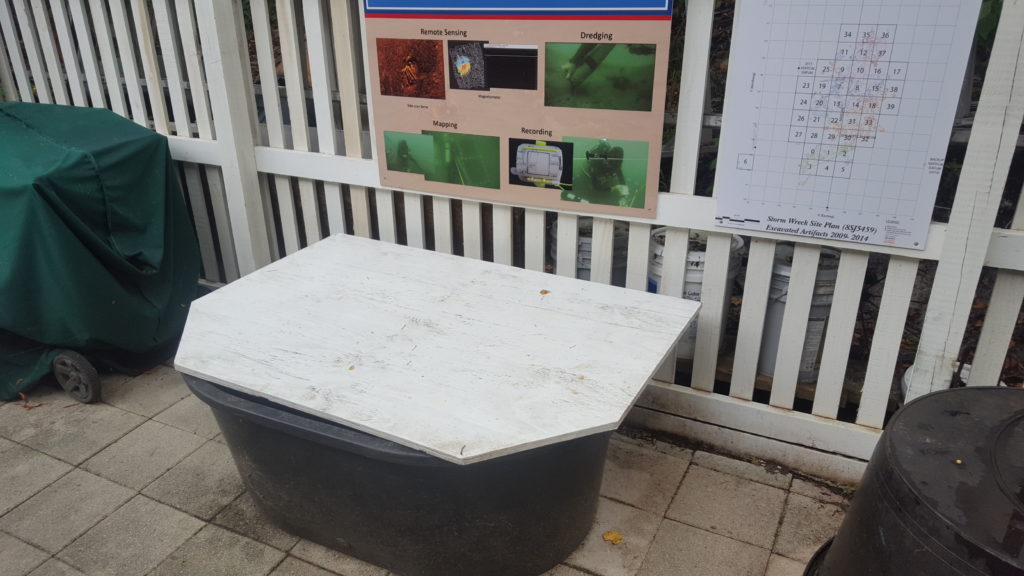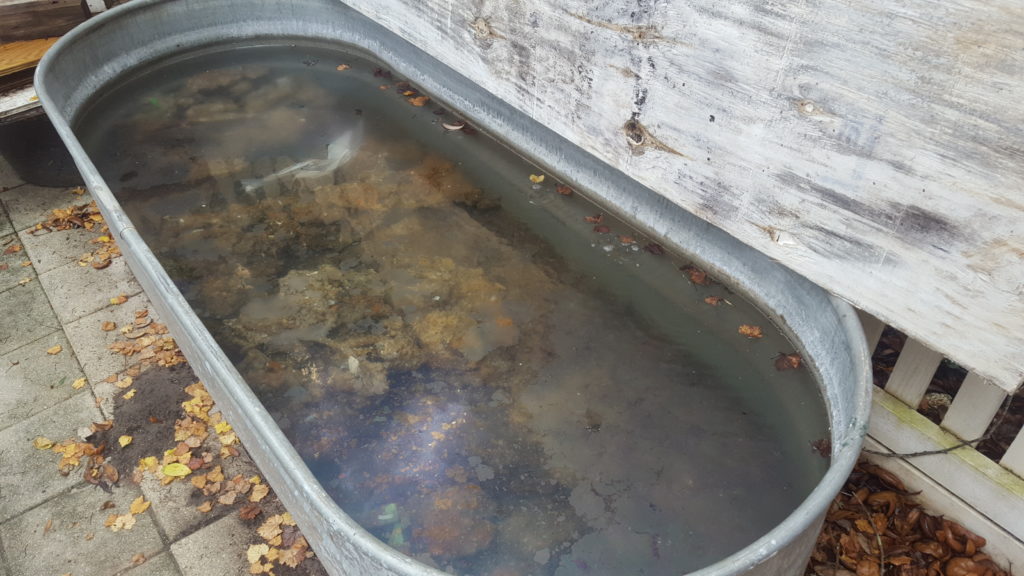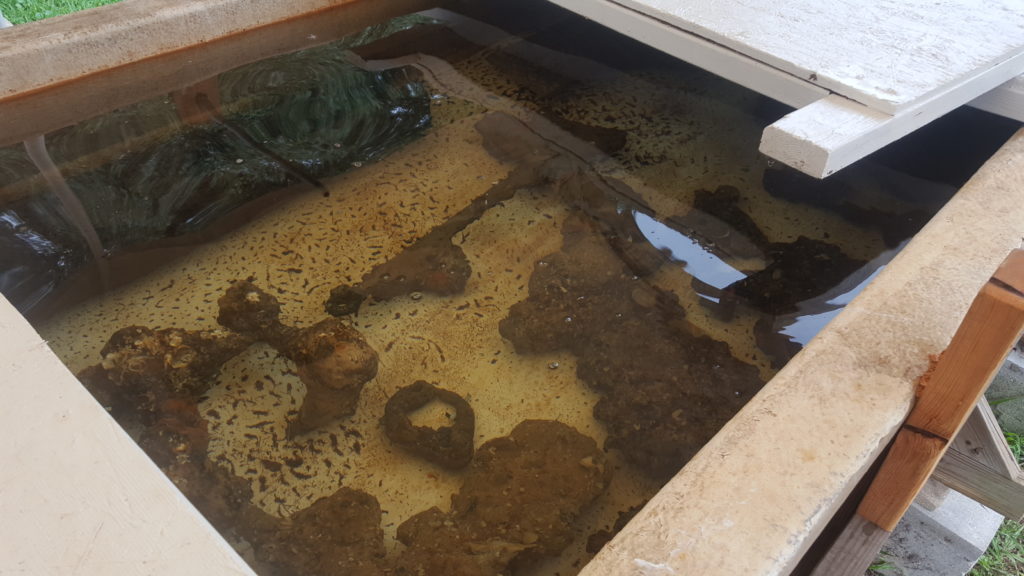The most exciting news around the Lighthouse these days is the imminent construction of new buildings for archaeology and conservation. The new Maritime Archaeology & Education Center will be approximately 2,500 square feet dedicated to offices, public education, exhibits and laboratory space. This community facility will be a welcome addition to the Lighthouse grounds and a fantastic experience for the guests.
« Learn more about the Maritime Archaeology & Education Center and see a video from First Coast News here! »
However, before the buildings are constructed, there is a lot of work to be done. For the conservation team, that means clearing the current working area and prepping for the upcoming build. All the artifacts, storage containers, electrolysis apparatuses and equipment need to be moved for the construction to take place.
The first step to be taken was moving the logfish vat out of the middle of the fenced-in conservation “corral.” The logfish vat is a large wood and fiberglass storage container built to hold ship timbers recovered from a previous excavation. For years it stood as a container (and a table for holding field school equipment), and while useful, went largely unoccupied. We moved the logfish vat to help expedite the next stage in the building process.
Before any of the buildings pop up in the conservation area, there will be an addition of new sewage lines. Right now, for conservation we just use a regular septic drain. This limits us to certain chemicals we can use for treatments to what is safe to put down the sink. With the sewage, we can use stronger and better (but not any more dangerous or hazardous to the sewage water) chemicals for conservation.
After moving the logfish vat, we next turned our attention to cleaning up the rest of the inside of the “corral.” We picked up and moved the various bricks and pavers underneath the vat. We then began moving all the storage containers used for concretions.
As the concretions are excavated, x-rayed and documented, they were stored for possible conservation. We tried to separate the concretions into field season years for ease of keeping track of them.
For the past few years we have gone through the priority artifacts and begun conserving the unique ones. All the rest, however, may not be conserved. There are many concretions that are either duplicates or are not of significant interest and do not need the time, cost and effort expended on them. These concretions sit and wait in the storage vats until we can take them back to the Storm site.
All of the non-conserved artifacts and concretions from the Storm Wreck will eventually be redeposited back onto the seafloor and buried. We sorted through all of the remaining objects and transferred the high-priority concretions into the logfish vat and the low-priority ones into a separate storage container. Most likely, the artifacts will not be worked on or redeposited until after the new buildings are up and the conservation team is in its new home.
Check back with us on the Keepers’ Blog over the next few months as we document the progress of the new Maritime Archaeology & Education Center.
We are also still $100,000 short of completing our $2.5 million capital campaign that will help cover the costs of this new community facility. If you are interested in making a donation, visit our website or reach out to our Director of Development, Michelle Adams, at (904) 829-0745 ext. 212.
Andrew Thomson is the Assistant Conservator for the St. Augustine Lighthouse & Maritime Museum. He received his graduate degree and training from the Conservation Research Laboratory at Texas A&M.






